#songthaew
Text
Monkey Beach at Koh Larn
Monkey Beach or Nual Beach
Welcome to Monkey Beach at Koh Larn—a serene escape just a boat ride away from Pattaya. Here, soft sands meet turquoise waters, offering a tranquil retreat from the hustle and bustle of city life.
In this article, we’ll explore the beauty of Monkey Beach, share tips for getting there, and highlight the unforgettable experiences waiting for you.
How to find Monkey…
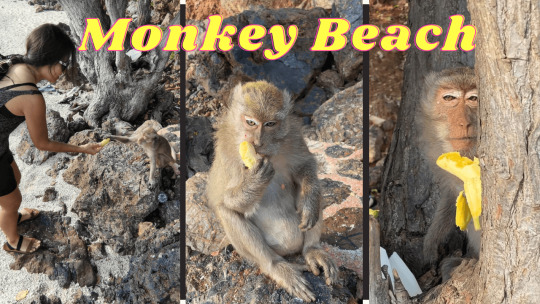
View On WordPress
#blue songtaews#kho larn#ko larn#ko larn island#koh larn#koh larn island thailand#koh larn thailand#kohlarn#monkey beach#nual beach#nual beach koh larn#songthaew
0 notes
Photo
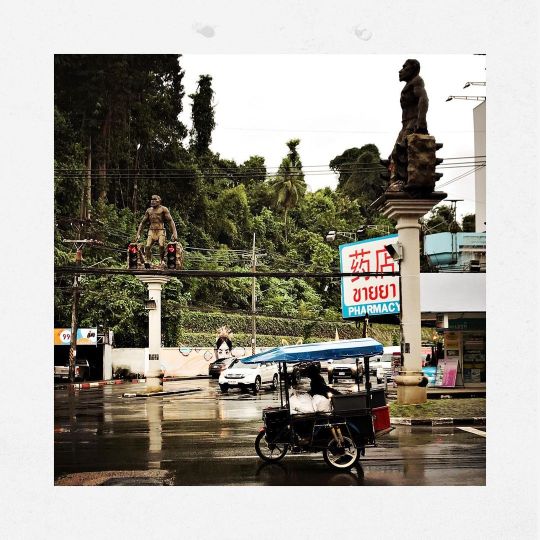
La pioggia, ai tropici, è un fatto. E, col cambio climatico, una possibilità concreta anche in questa stagione. Ieri abbiamo lasciato la nostra isoletta, dopo una notte di sonno nel nostro bungalow completamente silenzioso: con la pioggia gli animaletti della foresta stano zitti. Sapevatelo. Quindi, abbiamo affrontato il trasferimento fino al capoluogo di provincia, prima in #barca e poi in #songthaew, sempre avvolti in un’atmosfera particolare, come sommessa, più lenta. E siamo arrivati a #Krabi, avvolti nei nostri impermeabilini, con la chiara idea che qualcuno ci aveva mandato in terra un giorno di obbligato “riposo”, utile al reinserimento in società dopo tutta quella pace e quel bellissimo stacco isolano. Grazie al maltempo, potrò vantarmi d’essere stata qui e di non avere visto #RaiLay, uno dei luoghi più belli dell’intera Thailandia e suggestivo da morì. Chi se ne frega: io sono stata ferma, ho fatto vita di quartiere, visto nugoli di scimmie sulla riva del fiume di fronte a me, vissuto con insofferenza sia gli assalti dei taxi driver che i tanti (tanti, eh!) expat brutti, mangiato da 10 all’ennesimo mercatino, ascoltato il peggiore flautista sull’intera piazza Thai e mi sono sorpresa ancora una volta per l’assenza di scarraffoni in camera, anche in zone mooooolto a rischio. Siamo di nuovo in viaggio. Lasciato molto presto l’albergo, ce ne stiamo andando ancora un po’ più giù. Piano piano, fra una cosa e l’altra, ci avviciniamo alla Malesia. I mezzi di trasporto credo di averli presi tutti. Vediamo come va il meteo, nei prossimi giorni. Ogni cosa, in ogni caso, sarà illuminata. #giudittapills #thailand #thailandia #travelphotography #travel #photooftheday #instagood #igdaily (presso Krabi, Thailand) https://www.instagram.com/p/CmVZZJ-vl_e/?igshid=NGJjMDIxMWI=
#barca#songthaew#krabi#railay#giudittapills#thailand#thailandia#travelphotography#travel#photooftheday#instagood#igdaily
0 notes
Photo
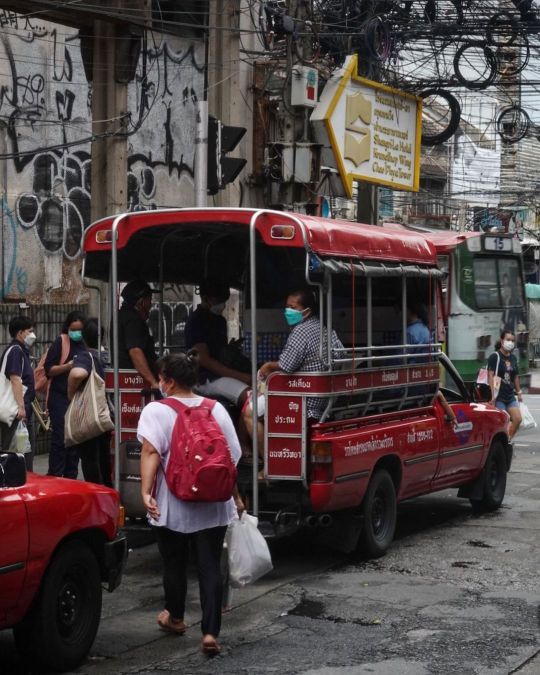
Seamless connection #saphantaksin #btsbangkok #songthaew #双条车 #bkkcity #bangkokstreet #bangkoklife #loves_thailand #instabkk #webangkok #bangkokspirit #loves_united_thailand #cityviewbkk #ig_bangkok #beautiful_bangkok #lostinbangkok #eyesonyouinbkk #loves_siam #ig_siam #instathailand #icu_thailand #ig_shotz_asia #bkkfashion #bangkokfeelings #beautiful_bangkok #visitbangkok #bangkoktrip #amazingthailand #bangkoktravel #amazingbangkok #travelthailand (at Saphan Taksin BTS Station) https://www.instagram.com/p/ChIzffNP0f7/?igshid=NGJjMDIxMWI=
#saphantaksin#btsbangkok#songthaew#双条车#bkkcity#bangkokstreet#bangkoklife#loves_thailand#instabkk#webangkok#bangkokspirit#loves_united_thailand#cityviewbkk#ig_bangkok#beautiful_bangkok#lostinbangkok#eyesonyouinbkk#loves_siam#ig_siam#instathailand#icu_thailand#ig_shotz_asia#bkkfashion#bangkokfeelings#visitbangkok#bangkoktrip#amazingthailand#bangkoktravel#amazingbangkok#travelthailand
0 notes
Text
Last Twilight IRL locations in Songkhla, ep 8
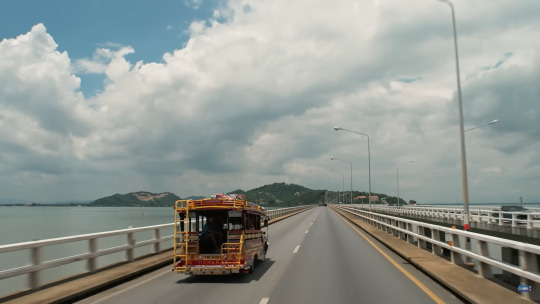

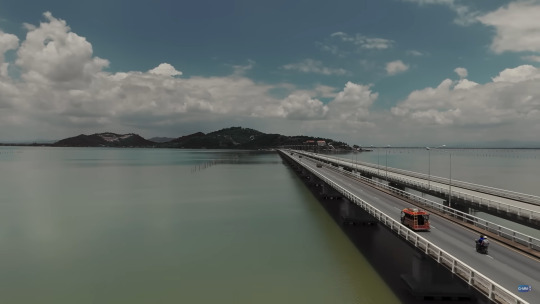

Last Twilight: Day and Mhok take a songthaew that passes over a bridge to get to Songkhla
IRL: Tinsulanonda Bridge, 5GRX+C63 ทะเลสาบสงขลา, Sathing Mo, Amphoe Singhanakhon, Songkhla 90280, Thailand
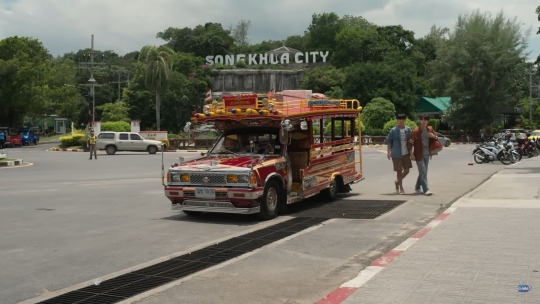
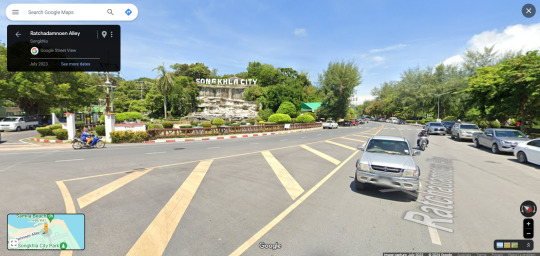
Last Twilight: Day and Mhok arrive in Songkhla
IRL: วงเวียนหาดสมิหลา, 6H7V+HXR Unnamed Road Mueang Songkhla District, Songkhla 90000, Thailand
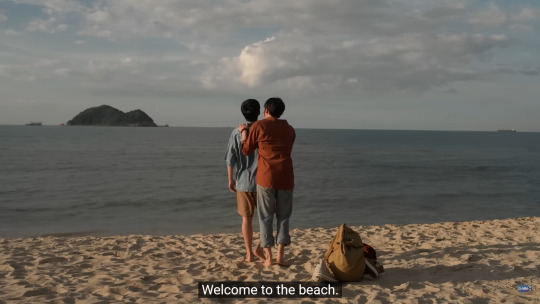
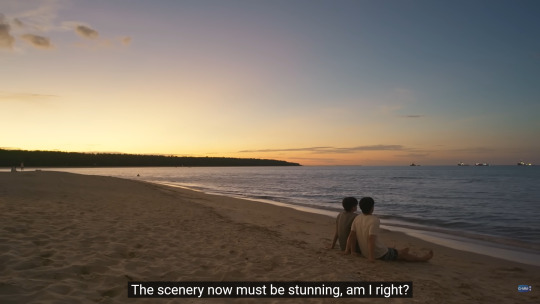
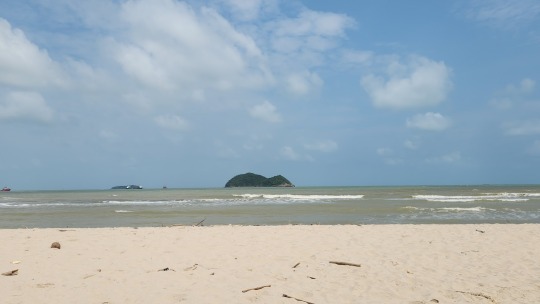

Last Twilight: Day and Mhok go to the beach
IRL: Samila Beach, Songkhla, Thailand
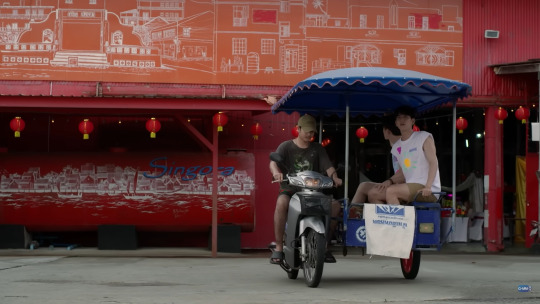

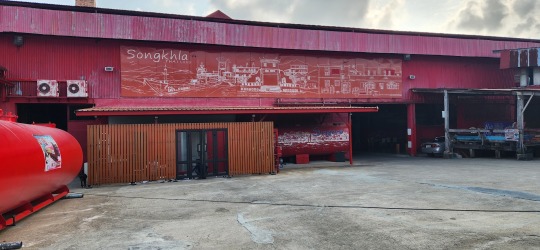
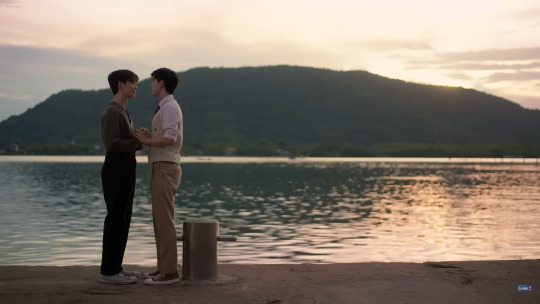
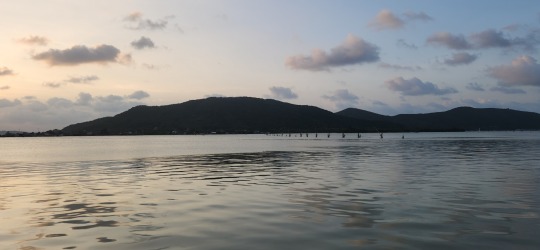

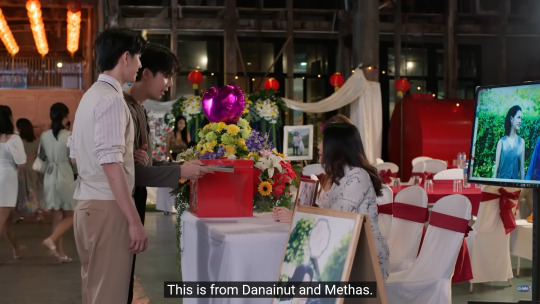
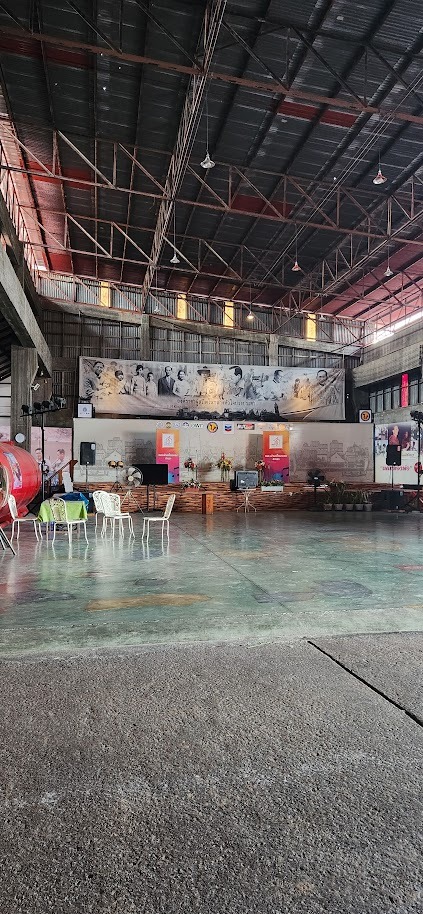

Last Twilight: Day and Mhok attend Aon and Pla's wedding
IRL: Hub Ho Hin (Red Rice Mill), 5HXQ+9C4, 13 Nakhonnok St, Bo Yang, Mueang Songkhla District, Songkhla 90000, Thailand
16 notes
·
View notes
Text


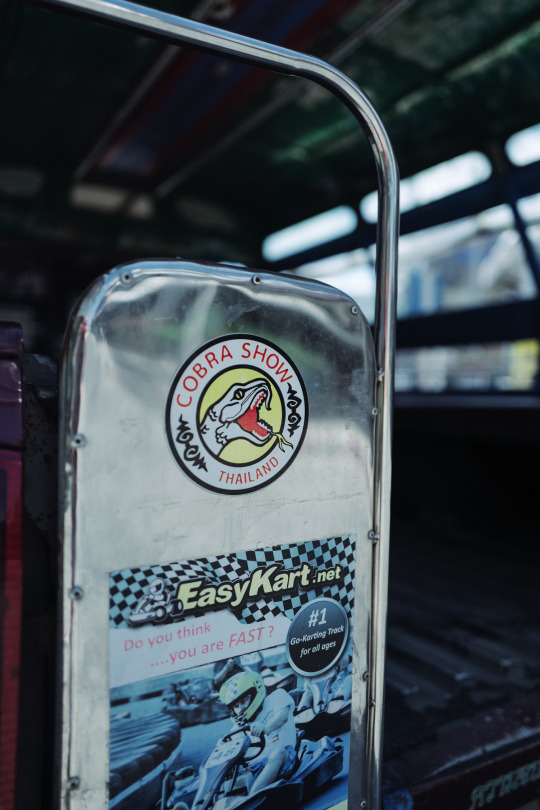

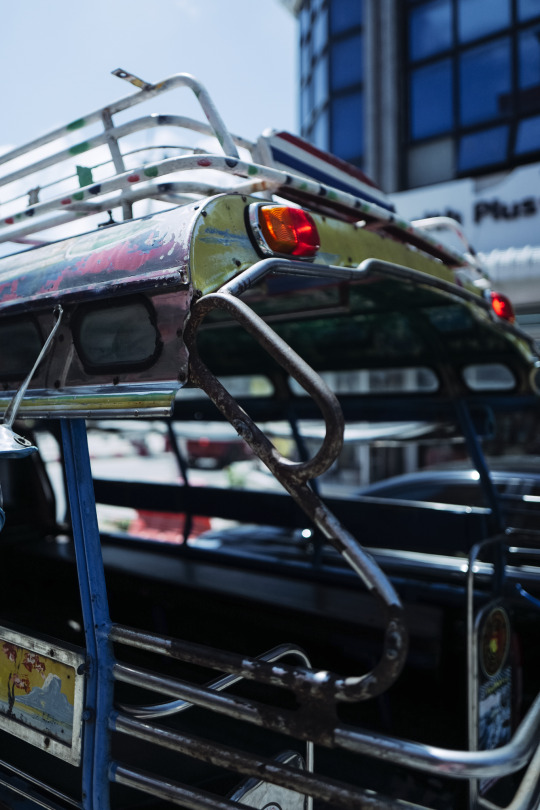




Songthaews of Koh Samui '24
0 notes
Text
Unveiling the Silver Splendor: A Guide to Wat Sri Suphan, Chiang Mai
Nestled in the heart of Chiang Mai's old town, Wat Sri Suphan, also known as the Silver Temple, is a sight to behold. This unique temple, adorned with shimmering silver, stands out against the backdrop of traditional Lanna architecture. Prepare to be captivated by its intricate details, rich history, and cultural significance.
If you want to visit Wat Sri Suphan hassle free, you can read our blog of Itinerary Plans. Click here
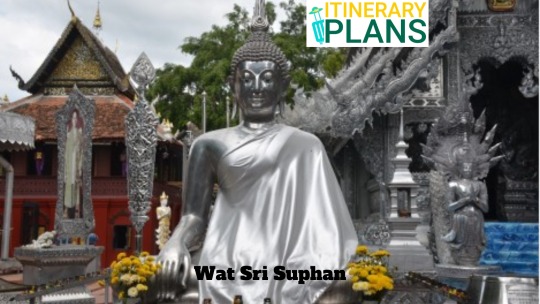
Location and How to Get There:
Wat Sri Suphan is conveniently located on Wualai Road, just south of the old city walls. Reaching the temple is easy:
By Songthaew: These shared red trucks are a budget-friendly option. Flag one down on the main roads and ask to be dropped off at Wat Sri Suphan.
By Tuk-tuk: Hire a tuk-tuk for a more personalized experience. Negotiate the fare beforehand and enjoy a scenic ride through the city. Click here
Best Time to Visit:
Early mornings or late afternoons offer the most pleasant temperatures for exploring the temple grounds. Aim to arrive outside of peak tourist hours (usually between 10:00 AM and 2:00 PM) to experience the serenity of the place.
Itinerary:
Marvel at the Ubosot: The main attraction is the ordination hall, entirely clad in silver, reflecting sunlight and creating a breathtaking spectacle. Admire the intricate carvings and traditional Lanna-style architecture.
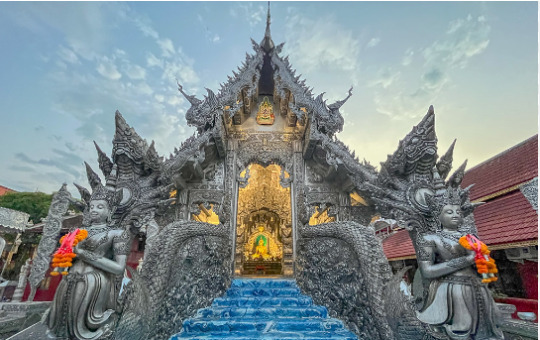
Explore the Temple Grounds: Take a walk around the temple complex and discover the other structures, including the viharn (main assembly hall) and chedis (stupas). Each building holds its own unique charm and tells a story about the temple's history and significance.
Do you want to know about Wat Sri Suphan’s full itinerary and important FAQs? Click here
Additional Tips:
Remember to dress modestly, covering shoulders and knees, out of respect for the sacred space.
Remove shoes before entering the Ubosot and other designated areas.
Photography is permitted, but be mindful of others and avoid using flash when photographing the Buddha statues.
.
0 notes
Text
Yun Lai Viewpoint Itinerary: Comprehensive Travel Guide.
Yun Lai Viewpoint stands as Pai's premier spot for catching the sunrise, situated 6 km west of the town. The journey from the town center typically spans around 15 minutes.
Today, we're here to provide you with all the essential details in one go: how to get there, where to go, when to visit, expenses, and nearby attractions. Yes, you read that right! Exciting itineraries await you. So, why wait? Pack your bags swiftly and embark on your journey with us. Click Here
History of Yun Lai Viewpoint
"Yun Lai" translates to "gathering clouds," likely referencing the stunning "sea of clouds" visible at sunrise. The land's owner named it, possibly reflecting both the cloud phenomenon and the area's history as a settlement for Yunnanese people fleeing China's revolution. Though its origins remain shrouded in some mystery, the viewpoint's name hints at its long-standing association with breathtaking scenery and cultural significance. Click Here
What to Expect Yun Lai Viewpoint
Breathtaking Views: The main draw of Yun Lai Viewpoint is its panoramic vistas of the Pai Valley. Expect rolling rice fields, lush green mountains, and the charming town of Pai nestled below. The view is particularly stunning during sunrise and sunset, when the sky is ablaze with colors and the valley might be filled with a mystical "sea of clouds."
Peaceful Atmosphere: The viewpoint is located on a hilltop, away from the hustle and bustle of Pai. This creates a serene and tranquil environment, perfect for relaxation and reflection. Especially during sunrise and sunset, expect a sense of peace and quietude to accompany the breathtaking views. Click Here
3 Days in Pai: Unforgettable Adventures with 6 Nearby attractions
Day 1:
Sunrise (8:00 AM): Start your day with breathtaking views at Yun Lai Viewpoint. See the enchanted "sea of clouds" and take breathtaking pictures.
How to reach Yun Lai Viewpoint
1. Bus:
From Chiang Mai: Regular buses depart from Chiang Mai Arcade Bus Station to Pai town. The journey takes approximately 3 hours and costs around 150-200 baht. From Pai town, you can take a songthaew (shared taxi) or rent a motorbike to reach the viewpoint. Click Here
If you want to know others attraction and related FAQs Click Here
0 notes
Text
29NOV2023 - Klappe, die Erste
Guten Morgen in die Welt, unseren ersten Tag in Pattaya gestern haben wir ziemlich faul verbracht. Wir haben nach dem Aufwachen erstmal die Koffer richtig ausgepackt und Schmutzwäsche sortiert (die lag übrigens abends schon fertig gewaschen bereit). Danach sind wir zum Frühstück gegangen und haben unsere geliebte Reissuppe mit Chicken verputzt.
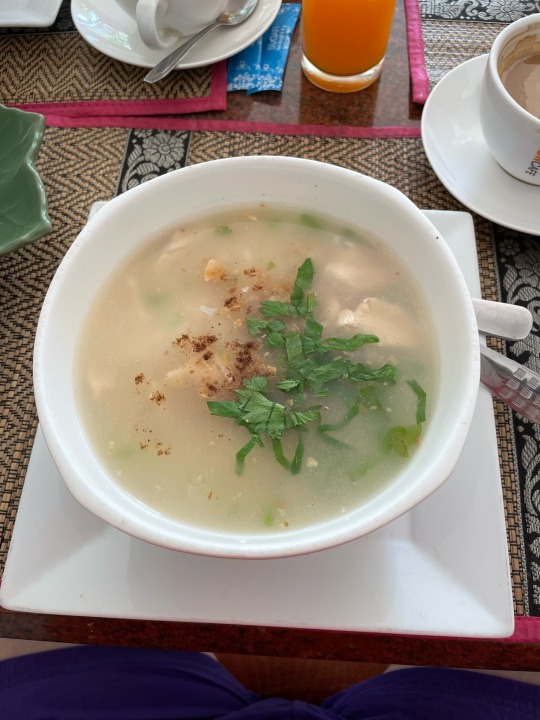
Zu uns gesellte sich dann ein Freund aus Zürich, den wir vor einigen Jahren im Sansuk kennengelernt und auch schon in Berlin getroffen haben. Er ist Musiker im Zürcher Kammerorchester und spielt mit Daniel Hope Mitte Februar im Konzerthaus (möchte einer mitkommen?). Mit dem haben wir erstmal lange getratscht, so dass es für den Strand zu spät wurde. Wir haben es uns stattdessen am Pool gemütlich gemacht.
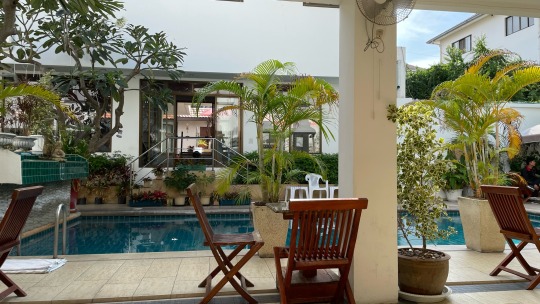
Irgendwann meldete sich dann auch wieder unser Magen mit einem Knurren und wir haben uns zum Abendessen begeben. Ein Songthaew brachte uns zum Jomtien Komplex, wo wir ein „Restaurant“ (es ist eigentlich nur eine Kochecke mit ein paar Tischen) ausprobiert haben, das uns Christoph empfohlen hat. Es war köstlich und sehr lecker. Und wieder unschlagbar günstig.
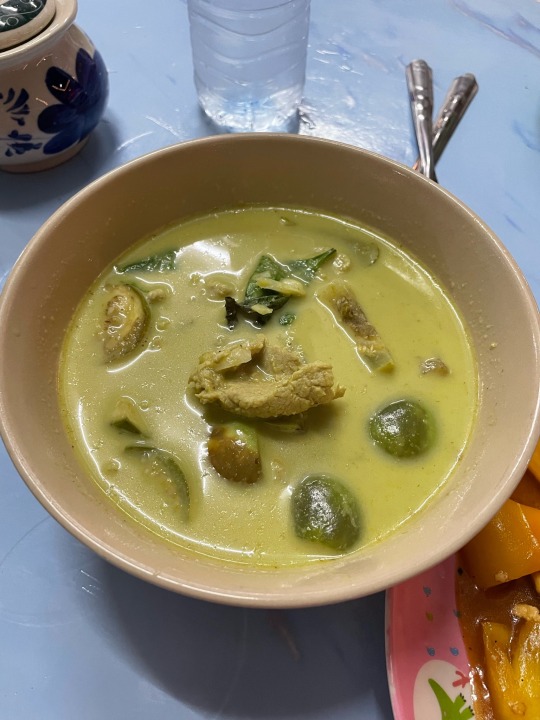
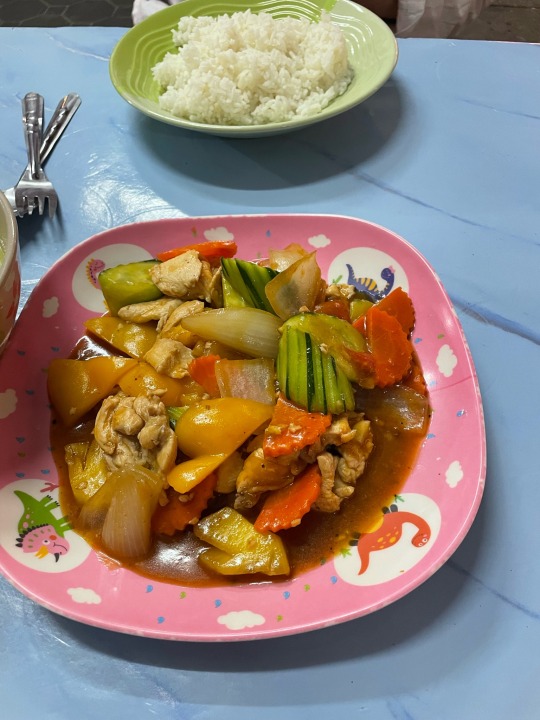

Auf dem Weg zu einem Drink haben wir Tong, einen Freund von Uli getroffen, der Massagen gibt. Er hat uns gefragt, ob wir denn auch eine Massage wollen und wir haben uns dann für je 300 THB eine schöne Massage gegönnt. Danach sind wir ins Hotel zurück und haben dort am Pool noch was getrunken.
0 notes
Text

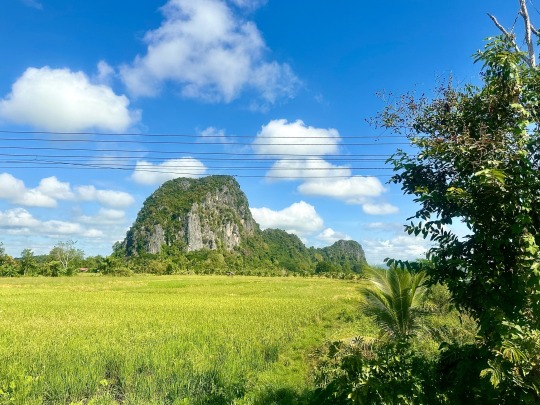


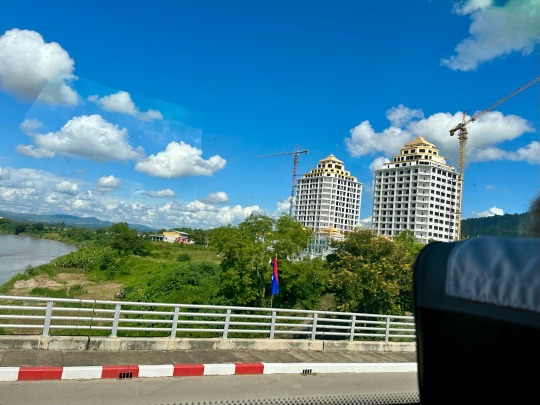
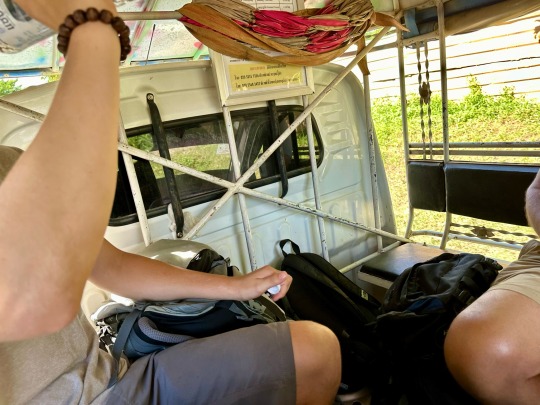

Mit dem lokalen Bus ging es in die Nähe der laotischen Grenze. Diesmal besteht meine frisch am Busbahnhof gebildete Reisegruppe aus einem kanadischen Landvermesser und einem deutschen Physiker.
Nachdem der Busfahrer mit dem Preis an der zweiten Tankstelle zufrieden war, wurde getankt und es konnte losgehen.
Von Chiang Khong ging es mit dem Songthaew (Sammeltaxi) bis zur Friendship Bridge.
Diese verbindet Thailand und Laos.
Mit dem Ausreisestempel im Pass ging es per Busfahrt über die Friendship Bridge, um auf der gegenüberliegenden Seite nach Laos einzureisen.
40 USD (Visum) und 40 THB (Stempelgebühr) später teilte ich mir mit meiner neuen Reisgruppe sowie zwei Niederländern nochmal ein Sammeltaxi, um von der Grenze in die Stadt Houayxay zu fahren.
1 note
·
View note
Text
Remember Me the Series Masterlist
*Only the locations in the town where the boys grow up
- A grown-up Name works at a riverside cafe
- The boys head home after skipping school to play
- The boys’ homes in Chachoengsao (excluding Nan’s)
- The boys and Champ’s older sister cross a bridge on their way home
- One of the spots that the boys play at
- The boys post letters to their penpals
- The boys take the songthaew home
- The boys go to Champ’s house to try to watch a horror movie
- Name and Em accompany Gun to see Golf at his school
- Name sees off Em and Champ, who are headed to university in Bangkok
Bonus: Gun, Golf, Em and Nan’s university
8 notes
·
View notes
Text
Discovering Thailand: Your Ultimate Travel Guide

Thailand, the Land of Smiles, is a captivating Southeast Asian gem that beckons travelers from around the world with its rich culture, stunning landscapes, and delicious cuisine. From bustling metropolises to tranquil beaches and lush jungles, Thailand has it all. In this travel guide, we'll take you on a journey through the essentials of planning an unforgettable trip to this enchanting destination.
Preparation Before Visiting Thailand
Before embarking on your Thai adventure, there are several key preparations to make. Firstly, ensure your passport is valid for at least six months beyond your intended departure date. Next, consider travel insurance that covers medical emergencies and trip cancellations. Vaccinations might be required, so check with your healthcare provider for the latest recommendations.
Thailand's currency is the Thai Baht (THB), so having some local currency in cash is handy for small expenses. Additionally, familiarize yourself with Thai customs and traditions to show respect to the locals.
How to Get a Visa and Other Required Documents
Most tourists can enter Thailand without a visa for stays of up to 30 days (or 45 days, depending on nationality). However, if you plan to stay longer, you may need a tourist visa. You can apply for one at a Thai embassy or consulate in your home country. Make sure to check the specific requirements for your nationality and the latest updates on visa policies.
You'll need a valid passport, passport-sized photos, a completed visa application form, and proof of sufficient funds for your stay. Visa processing times can vary, so apply well in advance.
Places to Visit in Thailand
Thailand boasts a plethora of incredible destinations, each offering a unique experience. Bangkok, the vibrant capital, is a bustling metropolis where modernity meets tradition. Explore the Grand Palace, Wat Pho, and sample street food delights at Chatuchak Market.
The northern city of Chiang Mai is a haven for culture and adventure. Visit ancient temples, take part in a traditional Thai cooking class, and embark on a trek through the lush hills of Northern Thailand.
The southern islands, like Phuket and Koh Samui, offer stunning beaches, crystal-clear waters, and vibrant nightlife. Don't forget to explore the stunning Phi Phi Islands for a taste of paradise.
Places to Visit in Small Towns
While Thailand's major cities are enchanting, don't overlook the charm of its small towns. Pai, nestled in the mountains of Northern Thailand, is a hippie haven known for its natural beauty and relaxed atmosphere. Amphawa, a small canal town, offers an authentic glimpse into Thai life with its floating markets and riverside houses.
Personal Vehicle or Public Transport?
Thailand's well-developed public transportation system makes it easy to explore the country without a personal vehicle. Trains, buses, and domestic flights connect major cities and tourist destinations efficiently and affordably. Tuk-tuks and songthaews are popular for short distances within towns.
However, if you crave the freedom to explore remote areas, renting a car or motorbike is an option. Ensure you have an international driving permit (IDP) and are aware of local traffic rules.
Booking Couchsurfing or Cheap Hotels
For budget-conscious travelers, Thailand offers a plethora of accommodation options. Hostels, guesthouses, and budget hotels are readily available in popular tourist areas. Booking websites like Agoda, Booking.com, and Hostelworld are excellent resources for finding affordable stays.
Couchsurfing is also an option for those seeking a more immersive experience. Connect with locals and fellow travelers, staying with hosts who open their homes to guests for free.
Renting a Vehicle as a Tourist
Renting a vehicle in Thailand is straightforward, but it's essential to do so from a reputable company. Rental agencies typically require a valid driver's license and an IDP, which you can obtain in your home country before your trip.
Whether you're renting a car, motorbike, or bicycle, ensure you're familiar with local traffic regulations and have the necessary insurance.
Trekking and Solo Camping
Thailand's diverse landscapes make it an ideal destination for trekking and camping enthusiasts. Head to Chiang Mai for jungle treks that lead to remote hill-tribe villages. Khao Sok National Park in southern Thailand offers opportunities for camping amidst lush rainforests and serene lakes.
Always plan ahead, check for necessary permits, and follow safety guidelines when trekking or camping solo in Thailand's wilderness.
Applying for an International Driving License in Thailand
If you plan to rent a vehicle in Thailand, ensure you have an international driving permit Thailand (IDP) before arriving. To obtain an IDP, visit your local automobile association or government office in your home country. It's a straightforward process that usually requires valid identification, a small fee, and a recent passport-sized photo.
With your IDP in hand, you're ready to explore Thailand's breathtaking landscapes and vibrant culture at your own pace.
Thailand is a land of endless exploration, where tradition and modernity coexist in perfect harmony. By following these preparations and tips, you'll be well-equipped to embark on an unforgettable journey through this captivating country. From bustling cities to remote jungles, Thailand promises a diverse and enriching travel experience that will leave you with lasting memories and a genuine appreciation for the Land of Smiles.
0 notes
Text
Highlights von Chiang Mai

Herzlich willkommen, liebe Reisende und Thailand-Freunde, in Chiang Mai, der „Rose des Nordens“. Diese Stadt ist ein unvergleichlicher Schmelztiegel aus Tradition und Moderne, eingebettet in die atemberaubende Schönheit Nordthailands.
Eines der absoluten Highlights von Chiang Mai ist der Doi Suthep, ein Berg auf dem sich der goldene Tempel Wat Phra That Doi Sutep befindet. Diese Tempelanlage aus dem 14. Jahrhundert, ist ein Wahrzeichen der Stadt und eine wichtige Pilgerstätte. Eine Fahrt dorthin kostet Sie etwa 300 bis 400 Baht (umgerechnet ca. 8 bis 10 Euro) mit einem Roten Taxi, einem sogenannten "Songthaew". Und der Eintritt in den Tempel selbst beträgt 50 Baht für Ausländer, das sind etwa 1,30 Euro.
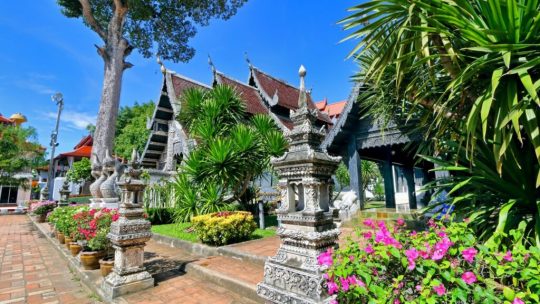
Nachdem Sie diese atemberaubende Tempelanlage besichtigt haben, sollten Sie unbedingt den Old City, den historischen Kern von Chiang Mai, besuchen. Hier finden Sie über 30 Tempel, darunter den Wat Chedi Luang, ein beeindruckender Tempel, dessen große Chedi (Stupa) teilweise durch ein Erdbeben zerstört wurde, und der Wat Phra Singh mit seiner fein ausgearbeiteten Holzschnitzerei und vergoldeten Innenräumen. Die Tempel in der Altstadt sind in der Regel kostenlos zu besichtigen, aber eine kleine Spende von 20 bis 50 Baht (etwa 0,50 bis 1,30 Euro) ist üblich und sehr geschätzt.
In Chiang Mai können Sie auch das Elefanten-Naturpark besuchen, eine ethische und nachhaltige Öko-Tourismus-Stätte, die sich dem Schutz und der Pflege geretteter Elefanten widmet. Eine Tagestour dort kostet etwa 2.500 Baht (ca. 65 Euro), aber der Preis beinhaltet Transport, Mahlzeiten und einen unvergesslichen Tag mit den Elefanten.
Lassen Sie uns über das Essen sprechen. Nordthailand ist berühmt für seine Küche und Chiang Mai ist kein Ausnahme.
In der Stadt finden Sie zahlreiche Straßenstände und Nachtmarktstände, die köstliche Gerichte wie Khao Soi, Sai Ua (Wurst aus Nordthailand) und Mango mit Klebreis servieren. Ein Essen an einem dieser Stände kostet Sie selten mehr als 50 bis 100 Baht (1,30 bis 2,60 Euro).
Zum Schluss möchte ich noch die Thapae Gate Walking Street, besser bekannt als der Sonntagsmarkt, erwähnen. Jeden Sonntagabend verwandelt sich die Thapae Straße in einen belebten Markt, auf dem Sie alles von handgefertigtem Schmuck bis zu traditionellen thailändischen Kleidungsstücken finden können. Es ist ein toller Ort, um Souvenirs zu kaufen und gleichzeitig die lokalen Handwerker zu unterstützen. Die Preise variieren, aber erwarten Sie, dass Sie für ein handgemachtes Souvenir zwischen 100 und 500 Baht (zwischen 2,60 und 13 Euro) bezahlen.
Chiang Mai ist eine Stadt voller Wunder und Charme, die darauf wartet, von Ihnen entdeckt zu werden. Ich hoffe, Sie sind genauso begeistert wie ich!
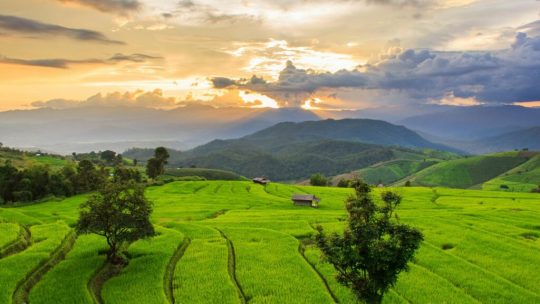
Read the full article
0 notes
Text
Travel Guide: The Ultimate Itinerary for Lanta Old Town
Looking for the perfect weekend getaway without the hassle of travel planning? Look no further! Let us introduce you to Lanta Old Town, a serene island retreat on Koh Lanta. Immerse yourself in the rich tapestry of traditional Thai culture, coastal charm, and historical significance as we unveil the hidden gems and captivating experiences of this vibrant trade-influenced village. Join us for an unforgettable adventure!
If you want to know more about Lanta Old Town, you can check out the web search results I found for you: Click Here
History of Lanta Old Town
Lanta Old Town, also known as Sri Raya, boasts a fascinating history intertwined with maritime trade and diverse cultural influences. Originally serving as the bustling port and commercial centre for Koh Lanta, it offered a secure haven for Arabic and Chinese trading vessels. This transformation from a sea gipsy settlement to a trade-influenced village is a testament to its vibrant past. The town stands as a testament to preserving its historic charm while encapsulating the essence of local Thai culture.Click Here
Best Time to Visit Lanta Old Town
The best time to visit Lanta Old Town depends on your trip preferences:
During the months of November to February, you'll experience the dry season in Koh Lanta. This wonderful time is characterised by sunny skies, pleasant temperatures, and minimal rainfall. It's important to keep in mind that this period is also the busiest, which means higher costs and larger crowds.Click Here
Things to Do in Old Town Lanta
When visiting Old Town Lanta, there are several engaging activities and attractions to explore. Here’s a rundown of the experiences you can enjoy at this charming destination:
Check Out the Wooden Stilt Buildings: Take a stroll down the main street of Old Town Lanta and admire the charming wooden stilt buildings. These traditional shophouses are some of the oldest on the island, and they give the town a unique and historic atmosphere.Click Here
Lanta Old Town 2 Days Itinerary
Lanta Old Town
Morning (9:00 AM – 12:00 PM):
Explore the iconic wooden stilt buildings in Lanta Old Town, taking in the unique cultural and architectural charm.Click Here
How To Reach Lanta Old Town
To reach Lanta Old Town, there are several transportation options available:
If you’re already on Koh Lanta:
Songthaew: The most common and affordable way to get around Koh Lanta is by Songthaew, a covered pickup truck that serves as a shared taxi. You can flag one down on the main road or ask your hotel/resort to help you arrange one. The fare from most places on the island to Lanta Old Town will be around 100-150 baht per person. Click Here
0 notes
Text
The Cost Of Lodging: Budget-Friendly Lodging Ideas For Hua Hin || SofiaHotelHuahin
For people who are visiting Hua Hin for the first time, the city centre offers the most self-sufficient travel experiences. Despite the fact that this location is highly congested, prices are normally reasonably steady, ranging from 400 to 500 thousand for an average guest house to 1 million to 1.5 million for a star hotel.

Cha Am or Pranburi are the best options if you're looking for a calm, large area to unwind in; the cost is slightly more here at 800 thousand or more. sofiahotelhuahin.com are good places to look for and compare prices for the top resorts, and best hotels in HuaHin.
When is the ideal time to go?
Hua Hin has a tropical, consistently warm climate with little seasonal variation. The best time to visit Hua Hin is between December and May, during the dry season, while the remaining months are frequently rainy, especially around September.
Fly to Bangkok and take a private cab or shuttle bus from Suvarnabhumi Airport to Hua Hin to reach Hua Hin. Direct trains from the airport typically cost around 2000 baht. This manoeuvre has the benefit of being quick—it only takes around three and a half hours—but the price is significant. You can also take a premium bus for about 269 baht per person to get to the airport. From Bangkok to Hua Hin, via bus, it will take you between 4 and 5 hours.
As an alternative, you can go from Hualamphong (Bangkok) to Hua Hin via train. Travel by train is reasonably priced. Third-class tickets are about 44 baht per person, while first-class tickets are about 202 baht each person. Though it takes roughly 5 to 6 hours, travelling by rail is a very lengthy process.
Additionally, Hua Hin travel reports that many tourists are self-sufficient there, so you can decide to relocate from nearby places like Koh Samui and Phuket. This is appropriate for travelers who want to visit several locations in Thailand concurrently. Depending on the class you choose, the total cost from Koh Samui for train tickets to Hua Hin and ferry tickets (from Koh Samui to the mainland) ranges from 500 to 1000 baht. If you decide to depart from Phuket, you can take a bus for about 500 baht. Finally, you can select from a choice of amenities when you get to Hua Hin to tour this city. The songthaew with fixed shuttles stands out among them all. You can also ride a tricycle or tuk-tuk as an alternative. Although you can also ride a bike if you become bored, with our self-sufficient Hua Hin vacation experience, biking and walking are the ideal methods to see the area.
Hua Hin is not very pricey, like the majority of other tourist attractions in Thailand. At a mid-range restaurant, a full supper for two costs between 400 and 500 baht. The cost of the drinks ranges from 40 to 60 baht each bottle. Meals will cost you about 100 baht (or less) if you decide to eat at well-known establishments.

decide on casual dining
Large restaurants are occasionally not a good option, much like other well-known tourist spots across the world. In Hua Hin, you should pick well-known eateries or "sidewalks" to sample the delectable cuisine of the area. This type of dinner costs only a hundred baht or so, but the local flavor is always top-notch.
To reach us out in offline mode do not forget to visit
SofiaHotelHuahin
100 / 3 - 6 Poonsuk Road Hua Hin, Prachuap Khiri Khan, Thailand 77110
Email: [email protected]
Visit Our website — https://sofiahotelhuahin.com/
0 notes
Text
Der Bua Tong Wasserfall, auch bekannt als Sticky Wasserfall Chiang Mai, ist ein mehrstufiger Kalksteinwasserfall, der durch üppigen Dschungel fließt, nur eine kurze Fahrt von der Stadt Chiang Mai in Nordthailand entfernt.
Wenn Sie schon einmal ein paar Wasserfälle besucht haben, wissen Sie, dass es ein rutschiges Spiel ist, sie zu erklimmen. Normalerweise müssten Sie sich nach oben rutschen und sich an Reben festhalten, in der Hoffnung, dass Ihre Füße plötzlich unter Ihnen durchrutschen. Am Bua Tong-Wasserfall können Sie jedoch aufgrund der dichten Kalksteinablagerungen und des relativ zahmen Abhangs bequem auf den mehreren Ebenen der Wasserfälle auf und ab klettern, ohne einen Sturz zu riskieren.
Obwohl Kalksteinwasserfälle an Orten wie den Philippinen häufiger vorkommen, findet man Thailands nördliche Wasserfälle typischerweise in Gebieten mit rutschigerem Sedimentgestein. Die einzigartigen, griffigen Mineralvorkommen haben Bua Tong den passenden Spitznamen Sticky Waterfall Chiang Mai eingebracht.
Lage des klebrigen Wasserfalls
Sticky Waterfall Chiang Mai liegt etwa 60 km nördlich der Altstadt von Chiang Mai. Der Wasserfall befindet sich in einem geschützten Naturgebiet, das als Lanna-Nationalpark bekannt ist.
Ich habe den genauen Standort auf der Karte unten markiert, damit Sie ihn leichter finden können.
Sie möchten nach Chiang Rai? Verpassen Sie nicht diesen epischen Führer zu den Wasserfällen von Chiang Rai.
Sticky Waterfall Directions – So kommen Sie hierher
Die Anreise zum Sticky Waterfall Chiang Mai ist auf drei verschiedene Arten möglich: Mieten Sie ein Motorrad und fahren Sie selbst, unternehmen Sie eine Wasserfalltour ab Chiang Mai oder Transportmöglichkeiten, einschließlich eines lokalen Songthaew oder Taxis.
Unabhängige Option: Motorrad von Chiang Mai
Für unabhängige Reisende ist der beste Weg, um zum Sticky Waterfall Chiang Mai zu gelangen, ein Motorrad in Chiang Mai zu mieten und selbst zu fahren.
Du kannst ein Motorrad in der Nähe der Altstadt für etwa 150-200 Baht pro Tag mieten. Ich würde empfehlen, mindestens eine Honda Click oder 100CC+ Motorradvariante zu kaufen, da Sie für einen langen Abschnitt der Reise auf Autobahnen fahren werden.
Insgesamt dauert die Fahrt von Chiang Mai zum Sticky Waterfall etwa 1 Stunde und 15 Minuten. Sie müssen der Route 1001 folgen und rechts in Richtung Sticky Waterfall Chiang Mai abbiegen, wie oben markiert.
Gesamtkosten: 200 Baht (Motorradmiete) + 100 Baht (Kraftstoffkosten) = 300 Baht
Klebriger Wasserfall Chiang Mai Tour
Verständlicherweise ist das Fahren eines Motorrads auf einem thailändischen Freeway nicht jedermanns Sache. Für diejenigen, die einen lokalen Führer und eine Tour bevorzugen, gibt es einige zur Auswahl.
Fahrrad- und Sticky-Wasserfall-Tour in Chiang Mai Für unter 1700 Baht können Sie eine Ganztagestour ab Chiang Mai City buchen, die Sie auf einer Fahrt mit dem Longtail-Boot zur Erkundung einer versteckten Höhle mitnimmt und mit einer malerischen Radtour zur Erkundung des Sticky-Wasserfalls endet.
Doi Suthep und Sticky Waterfall TourAlternativ können Sie auch diese personalisierte Kleingruppentour buchen, die am heiligsten Tempel von Chiang Mai Halt macht und eine geführte Tour zum Bua Tong Wasserfall beinhaltet. Diese Tour ist etwas teurer, hat aber unglaubliche Kritiken und anscheinend kennen die Guides alle guten Kletterspots.
Songthaew zum klebrigen Wasserfall
Abhängig von Ihrem Verhandlungsgeschick ist es auch möglich, eine Songthaew to Sticky Waterfall von der Altstadt von Chiang Mai zu einem angemessenen Preis zu buchen. Die Songthaews sind größere Taxis im Pick-up-Truck-Stil, die größere Gruppen als Tuk Tuks aufnehmen können.
Obwohl der Fahrer mit ziemlicher Sicherheit höher starten wird, können Sie damit rechnen, dass Sie für einen halbtägigen Ausflug von der Altstadt zum Sticky Waterfall etwa 1000 Baht bezahlen. Dies sollte eine Hin- und Rückfahrt beinhalten, und der Fahrer wird am Wasserfall auf Sie warten.
Alternativ
könnten Sie ein Grab buchen, aber ich habe festgestellt, dass Songthaews normalerweise billiger sind und der Grab-Fahrer nicht bei Ihnen bleibt, während Sie den Wasserfall genießen.
Eintrittsgebühr für den klebrigen Wasserfall 2020
Ab 2020 wird der Bua Tong Wasserfall eintrittsfrei. Das bedeutet, dass Sie am Wasserfall klettern und schwimmen können, ohne neben dem Transport einen einzigen Baht auszugeben.
Planen Sie einen Besuch in Pai und suchen Sie nach kostenlosen Aktivitäten? – Lesen Sie: Top 10 Dinge, die Sie kostenlos in Pai tun können
Klebriger Wasserfall Chiang Mai – Bua Tong Wasserfall
Sobald Sie am Parkplatz des Sticky Waterfall Chiang Mai angekommen sind, können Sie dem gepflasterten Weg durch den Garten folgen. Fast unmittelbar zu Ihrer Rechten sehen Sie die Spitze der höchsten Ebene.
Insgesamt gibt es drei Hauptebenen zum Bua Tong Wasserfall. Auf allen Ebenen gibt es Fixseile, sodass Sie oben beginnen und auf die unterste Ebene absteigen können.
Tipp: Besuchen Sie den Sticky Waterfall Chiang Mai früh, um das gesamte Gebiet für sich zu haben! Reisegruppen kommen in der Regel mittags oder nachmittags an.
Besteigung des Wasserfalls – Was Sie erwartet
Wie zu erwarten, können Sie den Wasserfall nur mit bloßen Füßen erklimmen. Das dichte Kalksteinmineral und die kalziumreichen Ablagerungen im Wasserfallgestein verleihen ihm eine raue und griffige Textur. Außerdem wächst auf dieser Art von Stein kein rutschiges Moos, was ihm ein wirklich „klebriges“ Gefühl verleiht.
DEN KLEBRIGEN WASSERFALL CHIANG MAI HINUNTERSTEIGEN
Schauen Sie sich die unteren Ebenen an
Die Hauptwasserfallebene bei Bua Tong ist die mittlere oder zweite Ebene. Sie erreichen diesen Punkt, nachdem Sie die erste Ebene hinuntergeklettert sind. Dieser Abschnitt ist der steilste, und es gibt sogar Schilder, die darauf hinweisen, dass Sie ihn bis zu einem bestimmten Punkt nicht erklimmen sollten.
Obwohl es keine Schilder oder Pfade gibt, würde ich empfehlen, eine weitere Ebene nach unten zu klettern, bis Sie den Grund erreichen. Dieser Abschnitt hat einen hüfttiefen natürlichen Pool, der an die Ufer des dichten thailändischen Dschungels fließt. Dies ist ein großartiger Ort, um ein paar Aufnahmen zu machen und ein Bad zu genießen.
UNTERE EBENE AM STICKY WASSERFALL
Besuchen Sie die natürliche Quelle – Chet Si
Nachdem wir über zwei Stunden am Wasserfall geklettert und geschwommen waren, entschieden wir uns, die natürliche Quelle zu besuchen, die den Sticky Waterfall Chiang Mai speist.
Sie finden die Quelle direkt gegenüber der Spitze der ersten Ebene in der Nähe des Eingangsgartens. Es gibt einen Holzsteg und einen Pfad, der bis zu einem geräumten Bereich führt, wo Sie die türkisfarbene natürliche Quelle sehen können. Die Quelle heißt „Chet Si“ oder die Quelle der sieben Farben.
Obwohl Sie hier nicht schwimmen können, lohnt es sich, zu Fuß zu gehen und die überraschend ruhige Quelle der mächtigen Strömung zu den Wasserfällen zu sehen.
Geschichte des Bua Tong Wasserfalls
Der Wasserfall Bua Tong und die natürliche Quelle sind in der lokalen Folklore und Geschichte von Bedeutung. Es wird gesagt, dass die Quelle entstanden ist, nachdem eine entflohene Prinzessin vor einem Angriff auf das Lanna-Königreich geflohen war und in der Nähe der Quelle ihr Lager aufgeschlagen hatte.
Die Prinzessin namens Buatong (Goldene Blume) betete um Wasser, um ihr Versteck zu erhalten. Ihr Wunsch wurde erfüllt, als die Erdgöttin die Erde aufbrach, die Chet Si-Quelle enthüllte und den Bua Tong-Wasserfall schuf.
Wasserfall-Tagesausflug von Chiang Mai
Für unabhängige Reisende, die ein ganztägiges Wasserfallabenteuer erleben möchten, ist es möglich, einen anderen nahe gelegenen Wasserfall mit diesem Tagesausflug zu kombinieren.
Nachdem wir den Sticky Waterfall Chiang Mai besucht hatten, entschieden wir uns, zum Mork Fa Waterfall zu fahren. Es gibt einen kleinen Umweg, aber es sollte nicht länger als 50 Minuten dauern, um diesen Wasserfall zu erreichen, was auch die Rückfahrt nach Chiang Mai verkürzt.
Genießen Sie diesen Sticky Waterfall Chiang Mai Guide? Haben Sie Fragen? Hinterlasse gerne einen Kommentar oder erreiche mich persönlich per E-Mail.
.
0 notes
Text
Khám Phá Biểu Tưởng Độc Đáo Tại Pattaya – Khau Chee Chan
Giới thiệu Tổng quan về công trình Trân Bảo Phật Sơn – Khau Chee Chan
Khao Chee Chan là một trong những điểm du lịch nổi tiếng tại Pattaya, Thái Lan. Được biết đến với tên gọi khác là Trân Bảo Phật Sơn hay Quan Âm Sơn. Khi đến đây, du khách sẽ được chiêm ngưỡng một công trình kiến trúc đồ sộ, tinh xảo, một bức tượng Phật Thích Ca Mâu Ni đang ngồi thiền lớn nhất thế giới khắc trên núi đá bằng công nghệ Laze và phủ nổi bằng ròng 24 kara, cao 130 m, rộng hơn 70m.
Phí tham quan và giờ mở cửa
Khao Chee Chan được mở cửa từ 6h sáng đến 18h tối và miễn phí vé vào cửa với mọi du khách tham quan.
Vị trí tọa lạc và cách di chuyển tới núi tượng Phật
Khao Chee Chan nằm ở tỉnh Chon Buri, cách Thành phố Pattaya khoảng 15 km. Để di chuyển đến đây, phương tiện được nhiều du khách chọn lựa nhất là xe Songthaew (một loại ôtô bán tải).
Những điểm đến nổi tiếng gần núi tượng Phật – Khau Chee Chan:
- Khu vườn nho – Hồ bạc
- Bảo tàng sáp Wat Yan (Wat Yan Sangwararam)
- Vườn hoa lan Nongnooch
Xem thêm:
https://vtplustravel.com/kham-pha-bieu-tuong-doc-dao-tai-pattaya-khau-chee-chan/
Tour du lịch Thái Lan:
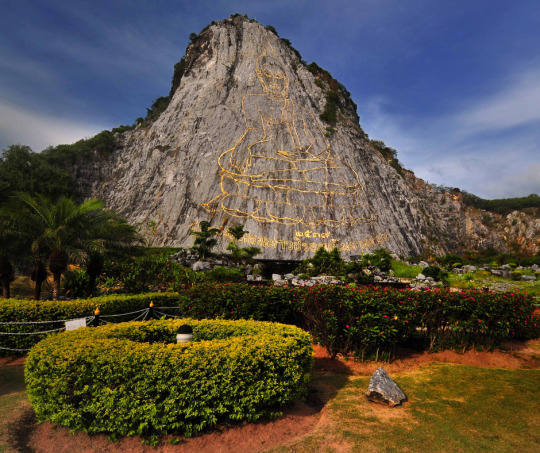

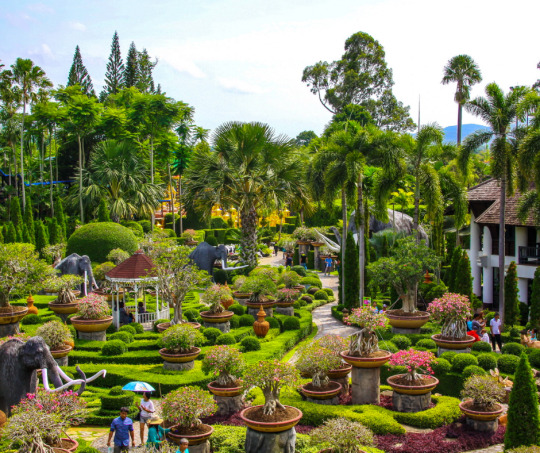

0 notes